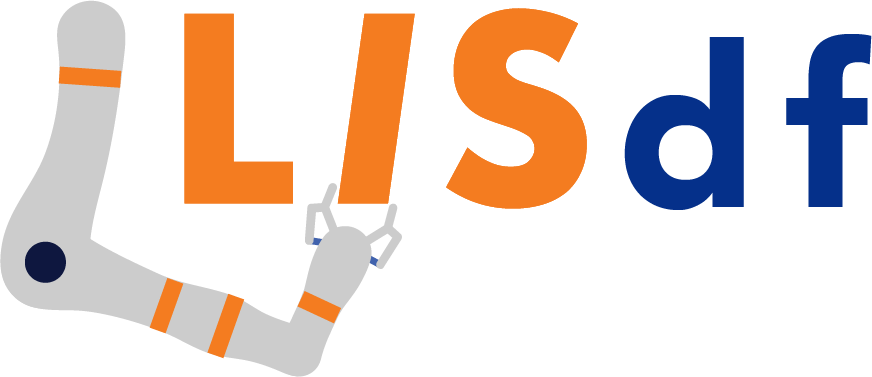A repository for a universal I/O spec for Task and Motion Planning (TAMP), along with scripts to convert from popular specs to our spec. Includes:
- LISdf specification for specifying scenes for TAMP.
- A sophisticated parser for reading
.lisdfscene files. - The LISdf Plan Output format, with helpers to read, write, validate and run plans.
Note: this repository is under active development and is not intended for general use.
Please contact willshen at mit.edu and jiayuanm at mit.edu if you are interested in using this package.
Table of Contents
Dependencies: this package required Python 3.8 or higher. Although the dependencies within lisdf are minimal,
we recommend you use a conda env
or virtual env with an appropriate Python version.
pip install lisdf
Clone the repository and install the dependencies with pip:
> git clone [email protected]:Learning-and-Intelligent-Systems/lisdf.git
> pip install -e .- LISdf Input Spec: coming soon...
- LISdf Plan Output Spec (Google Doc)
Follow the instructions below:
- Clone the repository using
git clone.- If you are creating a virtual environment within the project directory, then you might want to call it one of
.env, env, .venv, venvas the code checks have been configured to exclude those directories.
- If you are creating a virtual environment within the project directory, then you might want to call it one of
- Run
pip install -e '.[develop]'to install all dependencies for development/contribution. - (Optional, required for unit tests) Install the
lisdf-modelsmodel files by runningWARNING: thepip install lisdf_models@git+https://github.com/Learning-and-Intelligent-Systems/lisdf-models.gitlisdf-modelsrepository is ~700MB big as of 10th September 2022. - Check CONTRIBUTING.md for more information on how to contribute to this repository, including how to run the tests, code checks, and publishing to PyPI.
This repository is licensed under the MIT License. See LICENSE for more details.
LISdf is an initiative within the Learning and Intelligent Systems (LIS) group at MIT CSAIL.
Contributors and Programmers (alphabetical order):
- Aidan Curtis
- Jiayuan Mao
- Nishanth Kumar
- Sahit Chintalapudi
- Tom Silver
- William Shen
- Zhutian Yang
Other contributors who helped with general discussions, design, feedback (alphabetical order):
- Leslie Kaelbling
- Michael Noseworthy
- Nicholas Roy
- Rachel Holladay
- Tomás Lozano-Pérez
- Yilun Du
Initial release to PyPI.
LISdf = Learning and Intelligent Systems Description Format






